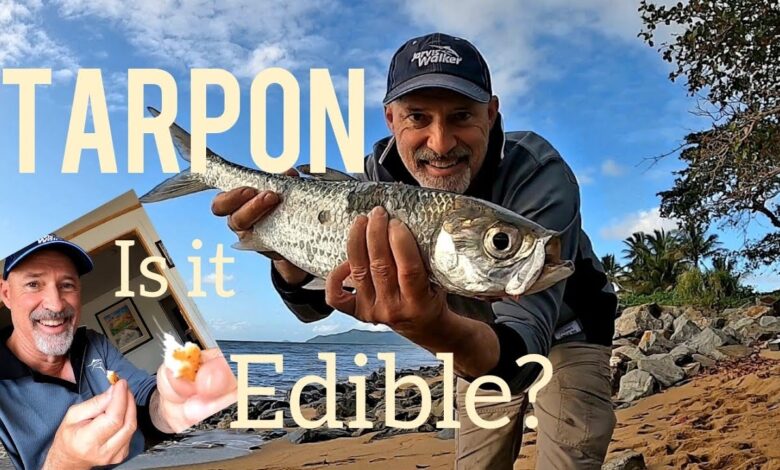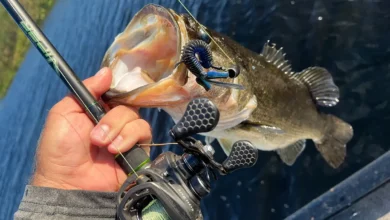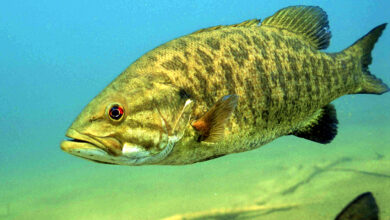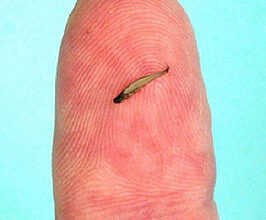Is Tarpon Good to Eat? A Friendly Look at This Legendary Fish

Have you ever seen a massive silver fish leap out of the water and thought, is tarpon good to eat? If you’ve spent any time around saltwater anglers, you’ve probably heard of tarpon, often called the “silver king.” They’re famous for their size, strength, and breathtaking acrobatics when hooked. But when it comes to the dinner plate, tarpon spark a lot of debate.
Some fishermen shake their heads at the idea of eating tarpon, while others say it can be done if you know how to prepare it. So, what’s the truth? Let’s explore tarpon from every angle—its history, taste, nutrition, cooking methods, and even cultural traditions. By the end, you’ll have a clear answer to whether this giant fish belongs on your plate.
What Exactly Is a Tarpon?
Before diving into the taste question, let’s talk about what tarpon are. Tarpon are large, prehistoric-looking fish found in the Atlantic Ocean, the Gulf of Mexico, and parts of the Caribbean. They can grow over seven feet long and weigh more than 200 pounds, making them one of the most exciting sport fish in the world.
Tarpon have thick, silver scales and long bodies that shimmer beautifully in the sun. They’re not just eye-catching; they’re also powerful fighters. Anglers often describe hooking a tarpon as the ultimate test of patience and strength.
Why Do People Wonder If Tarpon Are Good to Eat?
With fish that large, it’s only natural to ask if they’re edible. When someone reels in a 100-pound tarpon, the sheer amount of meat makes people curious about cooking it. After all, why release something that big if it could feed a crowd?
The question also arises because many other large fish, like grouper or snapper, are considered delicacies. So why not tarpon? The answer lies in flavor, texture, and cultural tradition.
What Does Tarpon Taste Like?
Here’s the honest truth—tarpon is not known for its delicious flavor. The meat is often described as coarse, dry, and strong-tasting. Unlike flaky white fish such as snapper or cod, tarpon has a dense texture that many people find tough and unappealing.
Some compare it to eating a mouthful of fishy cardboard. Others say smaller tarpon can taste better than larger ones, but even then, the flavor doesn’t rival more popular species.
In short, tarpon isn’t naturally tasty, and that’s why it hasn’t earned a spot among sought-after table fish.
The Challenge of Bones
Taste isn’t the only issue. Tarpon are filled with tiny, hard bones. Filleting a tarpon takes skill, patience, and plenty of time. Even after cleaning, small bones often remain, making the eating experience less enjoyable.
For many people, the hassle of deboning tarpon outweighs the curiosity of trying it. This is one of the biggest reasons most anglers release tarpon instead of cooking them.
Can You Cook Tarpon Anyway?
Yes—you can cook tarpon, but it takes creativity. Traditional methods like grilling or pan-searing often don’t do the fish justice. Instead, people who eat tarpon usually prepare it in ways that mask its natural texture and flavor.
Some common methods include:
- Grinding the meat – Tarpon meat can be ground and used in fish cakes or patties. The added spices and breading help hide the coarse texture.
- Smoking – Smoking tarpon can give it a stronger, savory flavor that balances its natural taste.
- Soups and stews – Slow-cooking tarpon in soups can soften the meat and make it more palatable.
So while tarpon isn’t a go-to fish for gourmet cooking, with the right preparation, it can be made edible.
Nutritional Value of Tarpon
Even if tarpon doesn’t win taste awards, it still provides nutrition. Like most fish, tarpon is a good source of lean protein, which helps build and repair muscles. It also contains omega-3 fatty acids, vitamins, and minerals.
However, because tarpon are large, long-lived fish, they may accumulate higher levels of mercury compared to smaller fish. This makes them less ideal as a regular food source. For health and safety, tarpon shouldn’t be eaten often.
Why Anglers Rarely Eat Tarpon
So if tarpon can technically be eaten, why do so few people do it? The answer is a mix of tradition, law, and practicality.
- Sport Fish Status – Tarpon are prized for their fight, not their flavor. Many anglers consider them too valuable as sport fish to eat.
- Regulations – In many states, tarpon are catch-and-release only. Florida, for example, does not allow keeping tarpon except under very strict conditions.
- Taste and Bones – As discussed, the meat isn’t appealing, and the bones make it difficult to prepare.
Because of all this, tarpon are almost always caught, photographed, and released.
Cultural Perspectives on Eating Tarpon
Interestingly, some cultures do eat tarpon. In certain parts of the Caribbean and Central America, tarpon are used in traditional dishes. Often, the meat is ground, heavily seasoned, or slow-cooked to make it enjoyable.
For locals in these areas, tarpon may not be a luxury meal, but it is considered a usable source of protein, especially when other fish are scarce.
Comparing Tarpon to Other Fish
To put things in perspective, let’s compare tarpon to other large fish:
- Snapper – Snapper is flaky, mild, and delicious, the opposite of tarpon.
- Grouper – Grouper has a firm but tender texture and a sweet flavor. Tarpon is tougher and stronger-tasting.
- Kingfish (King Mackerel) – Kingfish also has a strong flavor, but it’s still more widely eaten than tarpon.
- Catfish – Catfish is mild and versatile, making it a favorite. Tarpon lacks the same versatility.
Clearly, tarpon falls short compared to popular eating fish.
Myths About Eating Tarpon
Let’s bust a few myths:
- “Tarpon are poisonous.” False. They’re safe to eat, just not very tasty.
- “Nobody eats tarpon.” Not true. Some cultures do, but it’s rare.
- “Tarpon can’t be cooked well.” False. With the right preparation, it can be edible, though not exceptional.
Tips for Preparing Tarpon at Home
If you’re determined to try tarpon, here are some friendly tips:
- Start with smaller fish – They tend to taste better than giant ones.
- Debone carefully – Expect this step to take time.
- Use strong flavors – Marinades, spices, and smoking help balance the taste.
- Consider grinding – Turn the meat into patties or balls to make it easier to eat.
Approach it with curiosity, not high expectations, and you may be pleasantly surprised.
Conservation and Respect for Tarpon
Even though tarpon can be eaten, conservation is important. Tarpon populations are sensitive to overfishing, and many regions enforce strict catch-and-release rules. These protections help keep the species thriving for future generations of anglers.
Respecting tarpon as a sport fish means enjoying the thrill of the catch without necessarily putting it on the plate.
So, Is Tarpon Good to Eat?
The final answer depends on how you define “good.” Technically, tarpon is edible. With enough effort, it can be turned into meals like fish cakes or soups. But compared to other fish, tarpon falls short in flavor, texture, and convenience.
For most people, tarpon is far more enjoyable as a sport fish than as food. That’s why it’s called the “silver king”—not the “silver dinner.”
Final Thoughts
So, is tarpon good to eat? Not really, at least not in the way most people expect. While it provides nutrition and can be prepared in certain dishes, it simply isn’t a top choice for flavor or ease of cooking.
Still, tarpon’s value lies elsewhere. They’re legendary fighters, symbols of coastal fishing culture, and a thrill for anyone lucky enough to hook one. Even if they don’t end up on your dinner plate, tarpon deserve admiration and respect.
Next time you see one leap from the water, don’t think of it as a meal. Think of it as one of nature’s greatest athletes—a fish that’s meant to be caught, admired, and released back into the wild.



